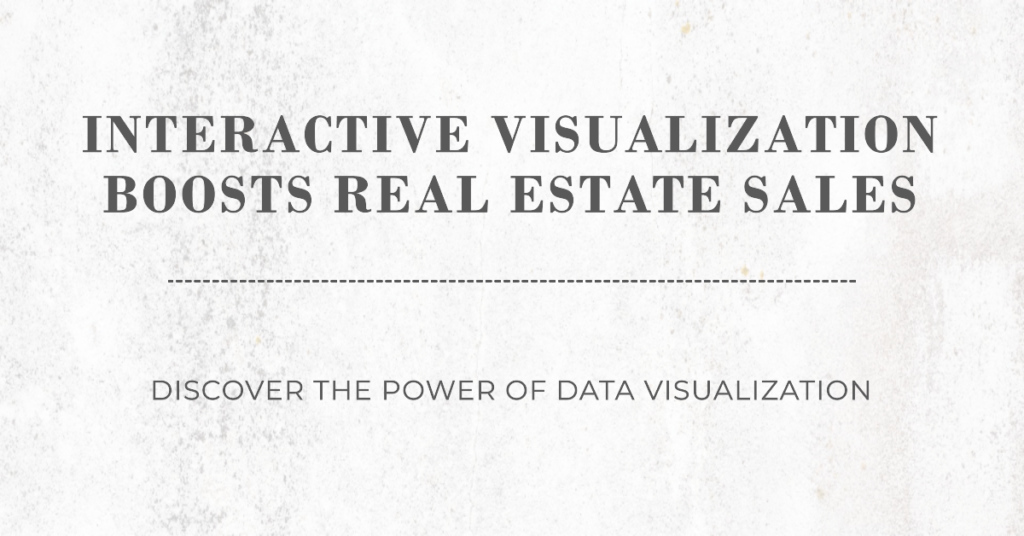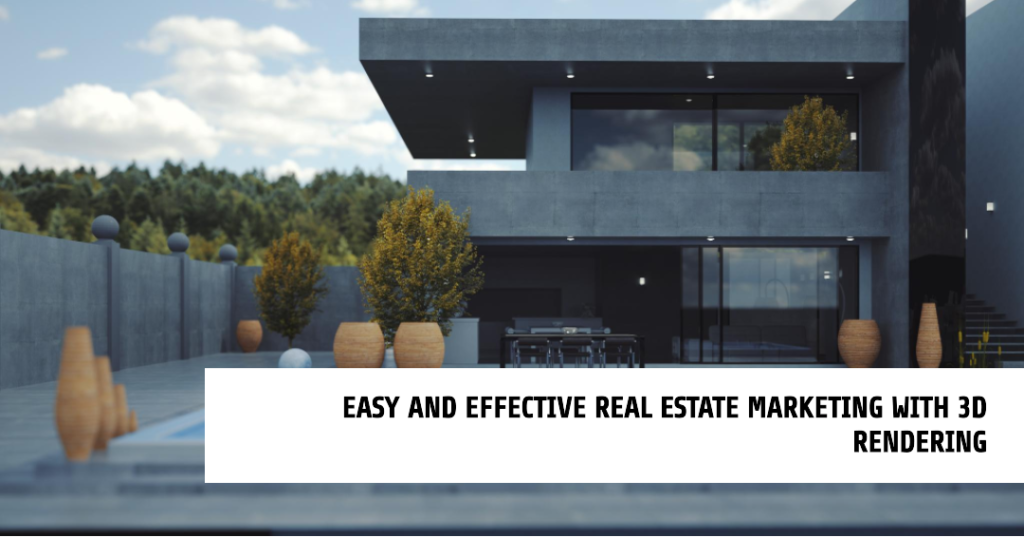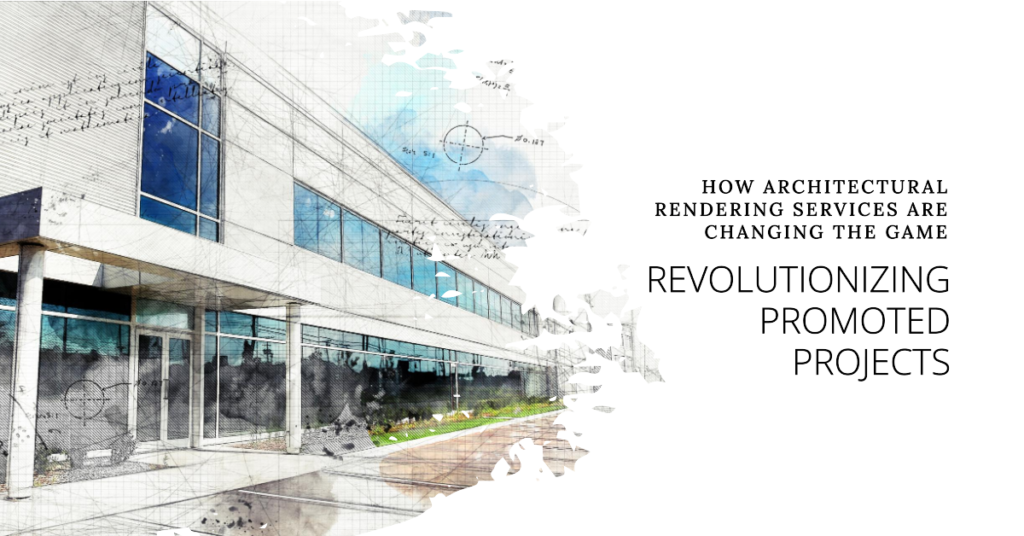
Table of Contents
Introduction to Visualization:
Visualization In today’s competitive real estate market, the ability to stand out and engage potential buyers is paramount. Traditional methods of showcasing properties through static images or brochures are quickly becoming outdated. Enter interactive visualization—a game-changer in the industry. By leveraging interactive visualization tools, real estate professionals can create immersive experiences that not only captivate buyers but also drive sales. In this blog post, we’ll explore how interactive visualization can transform the way real estate is marketed and sold, ultimately leading to increased success for agents and developers alike.
The Impact of Visual Engagement:
Visual engagement plays a crucial role in capturing the attention of prospective buyers. Static images and text descriptions can only convey so much about a property, often leaving potential buyers with unanswered questions or uncertainties. However, interactive visualization offers a dynamic solution that allows buyers to explore properties in a more immersive and interactive manner. Whether it’s through virtual tours, 3D floor plans, or interactive maps, these tools provide buyers with a comprehensive understanding of a property’s layout, features, and potential.
By allowing buyers to virtually walk through a property and visualize themselves living in the space, interactive visualization bridges the gap between imagination and reality. This level of engagement not only enhances the buying experience but also instills confidence in buyers, leading to faster decision-making and increased likelihood of conversion. Furthermore, interactive visualization can be accessed anytime, anywhere, making it convenient for buyers to explore properties at their own pace, whether they’re across town or across the globe.
Enhancing Property Presentations:
One of the challenges real estate professionals face is effectively presenting properties to potential buyers, especially when properties are still under construction or undergoing renovations. Static images or blueprints can only do so much to convey the vision and potential of a property. However, interactive visualization offers a solution that allows agents and developers to showcase properties in their best light, even before they are physically completed.
Through the use of virtual staging, for example, empty or unfinished spaces can be transformed into fully furnished rooms, giving buyers a glimpse of the property’s potential and helping them envision themselves living there. Additionally, interactive 3D models can illustrate architectural plans and design concepts in a way that static images cannot, providing buyers with a more realistic representation of the final product. By enhancing property presentations with interactive visualization, real estate professionals can effectively communicate the value and appeal of a property, ultimately driving interest and sales.
Personalized Buyer Experiences:
In today’s digital age, consumers expect personalized experiences tailored to their specific needs and preferences. This holds true in the real estate industry as well, where buyers have unique preferences when it comes to property features, location, and amenities. Interactive visualization allows real estate professionals to create personalized experiences for buyers, catering to their individual interests and priorities.
By leveraging interactive tools such as virtual reality (VR) or augmented reality (AR), agents can offer customized property tours that align with the buyer’s preferences. For example, a buyer interested in outdoor living spaces can virtually explore a property’s backyard oasis, while another buyer focused on interior design can take a closer look at the property’s stylish finishes and decor. This level of customization not only enhances the buyer’s experience but also demonstrates the agent’s attentiveness to their needs, fostering trust and rapport.


Driving Engagement Through Technology:
Technology has transformed the way we search for and consume information, and the real estate industry is no exception. Today’s buyers are tech-savvy and expect a seamless digital experience when searching for properties. Interactive visualization meets this demand by leveraging cutting-edge technology to create immersive and engaging experiences for buyers.
Whether it’s through interactive websites, mobile apps, or virtual reality platforms, real estate professionals can leverage a variety of tools to showcase properties in a compelling way. For example, 360-degree virtual tours allow buyers to explore every corner of a property from the comfort of their own home, while interactive floor plans provide a bird’s-eye view of the layout and flow. By embracing technology and incorporating interactive visualization into their marketing strategies, real estate professionals can capture the attention of today’s digital-savvy buyers and differentiate themselves in a crowded market.
Building Trust and Credibility:
Trust is a crucial component of any successful real estate transaction. Buyers want to feel confident that they are making an informed decision and that the property they’re investing in meets their expectations. Interactive visualization plays a key role in building trust and credibility by providing buyers with transparent and detailed information about a property.
By offering immersive experiences that accurately represent the property, real estate professionals can instill confidence in buyers and alleviate any concerns or uncertainties they may have. Whether it’s showcasing the layout of a new development, highlighting the quality of construction, or demonstrating the potential of a renovation project, interactive visualization allows buyers to make more informed decisions with confidence. Additionally, by embracing transparency and leveraging technology to enhance the buying experience, real estate professionals can position themselves as trusted advisors and industry experts.
Expanding Reach and Accessibility:
One of the limitations of traditional marketing methods is their limited reach and accessibility. Print ads, brochures, and open houses can only reach a finite audience, often restricted by geography or timing. However, interactive visualization breaks down these barriers, allowing real estate professionals to reach a wider audience and make properties more accessible to potential buyers.
Through online platforms and digital marketing campaigns, properties can be showcased to buyers across the globe, 24/7. Whether it’s through social media, email marketing, or virtual property tours, real estate professionals can leverage interactive visualization to expand their reach and attract buyers from diverse backgrounds and locations. This not only increases the exposure of properties but also creates opportunities for agents to connect with buyers who may not have been reached through traditional marketing channels.
Driving Sales and Conversions:
At the end of the day, the ultimate goal of any real estate marketing strategy is to drive sales and conversions. Interactive visualization is a powerful tool in achieving this goal by providing buyers with an engaging and informative experience that motivates them to take action. By immersing buyers in the property and allowing them to visualize themselves living there, interactive visualization increases the emotional connection and desire to purchase.
Furthermore, by providing buyers with detailed information and addressing their questions and concerns upfront, real estate professionals can streamline the sales process and overcome objections more effectively. Whether it’s through virtual tours, interactive floor plans, or personalized property presentations, interactive visualization helps to create a sense of urgency and excitement that motivates buyers to move forward with their purchase decision. As a result, real estate professionals can expect to see increased sales and higher conversion rates by incorporating interactive visualization into their marketing strategies.
Conclusion:
In an increasingly competitive real estate market, the ability to engage buyers and differentiate properties is essential for success. Interactive visualization offers a dynamic solution that transforms the way properties are marketed and sold, providing buyers with immersive experiences that drive sales and conversions. By leveraging cutting-edge technology and embracing personalized experiences, real estate professionals can unlock the full potential of interactive visualization and revolutionize the industry. As we look to the future of real estate marketing, interactive visualization will undoubtedly continue to play a central role in shaping the way properties are showcased and sold.


